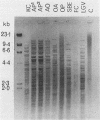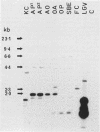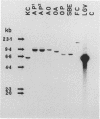Abstract
DNAs from eight Chlamydia psittaci isolates (koala conjunctivitis, avian psittacosis, avian ornithosis, ovine abortion, ovine polyarthritis, sporadic bovine encephalomyelitis, and feline conjunctivitis) and one Chlamydia trachomatis isolate (lymphogranuloma venereum) were compared by restriction endonuclease and DNA probe analyses. Digestion with HindIII yielded a series of discrete fragments which allowed the differentiation of most isolates. A gene probe, pFEN207, which encodes the chlamydia-specific component of the lipopolysaccharide group antigen was used in Southern hybridizations. The probe was chlamydia specific and hybridized to a single BamHI fragment and multiple HindIII fragments in each isolate. The variation in size of the hybridizing fragments allowed easy differentiation of the isolates and may eventually lead to a meaningful subgrouping of the diverse group of disease agents presently included in the species C. psittaci.
Full text
PDF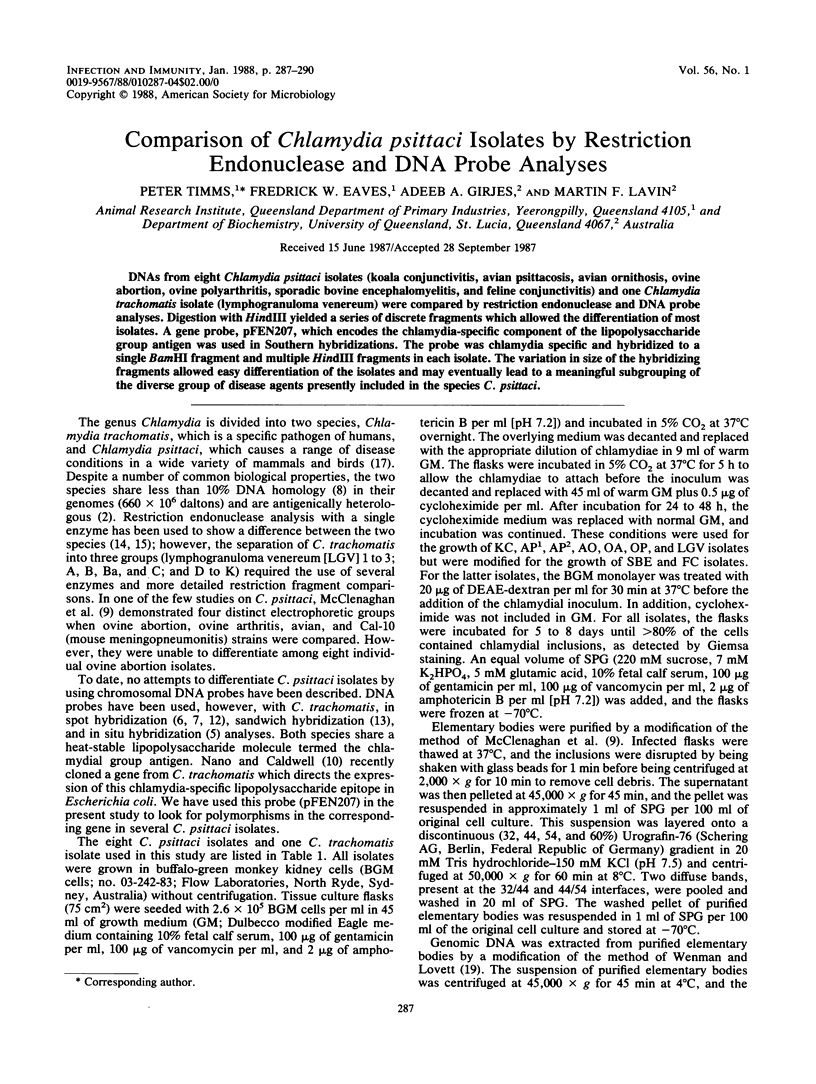
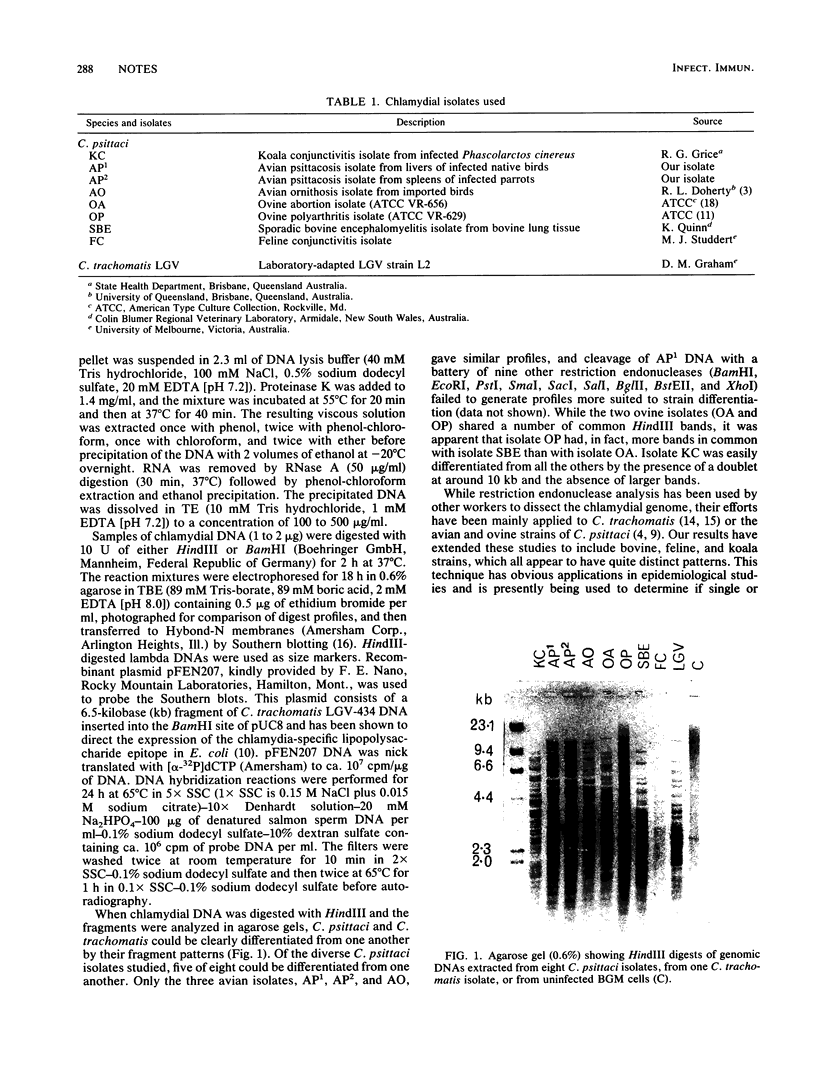
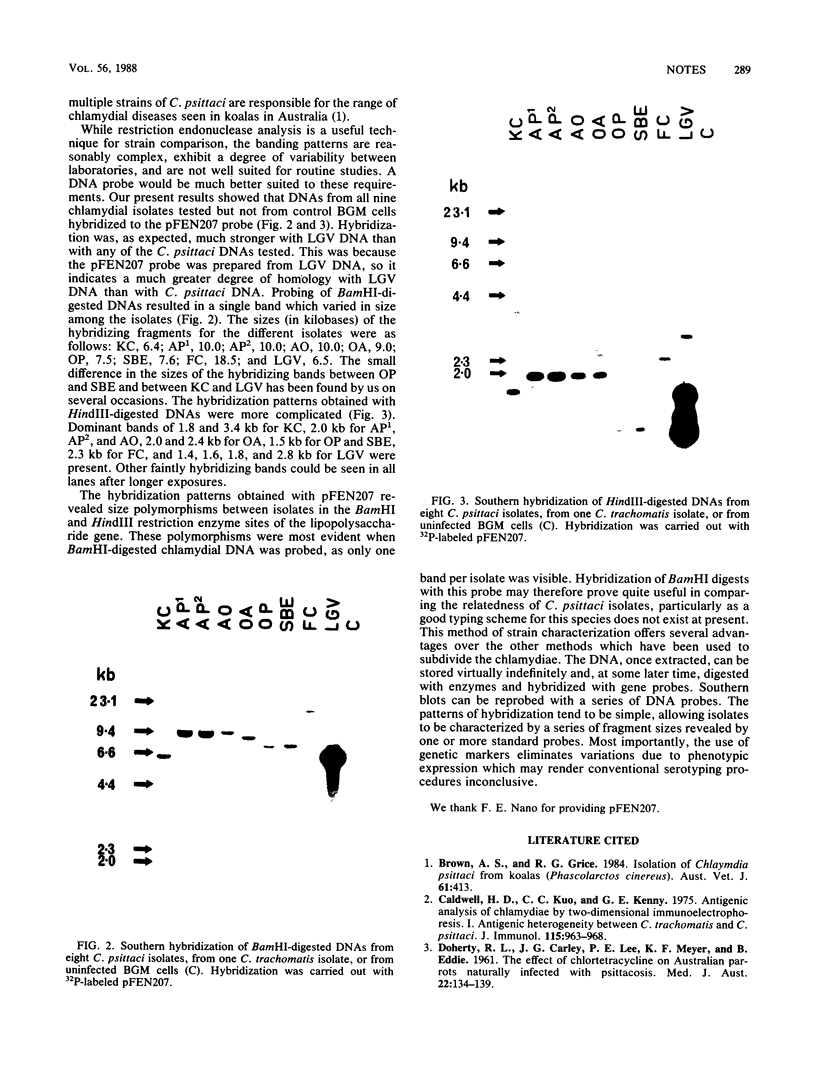
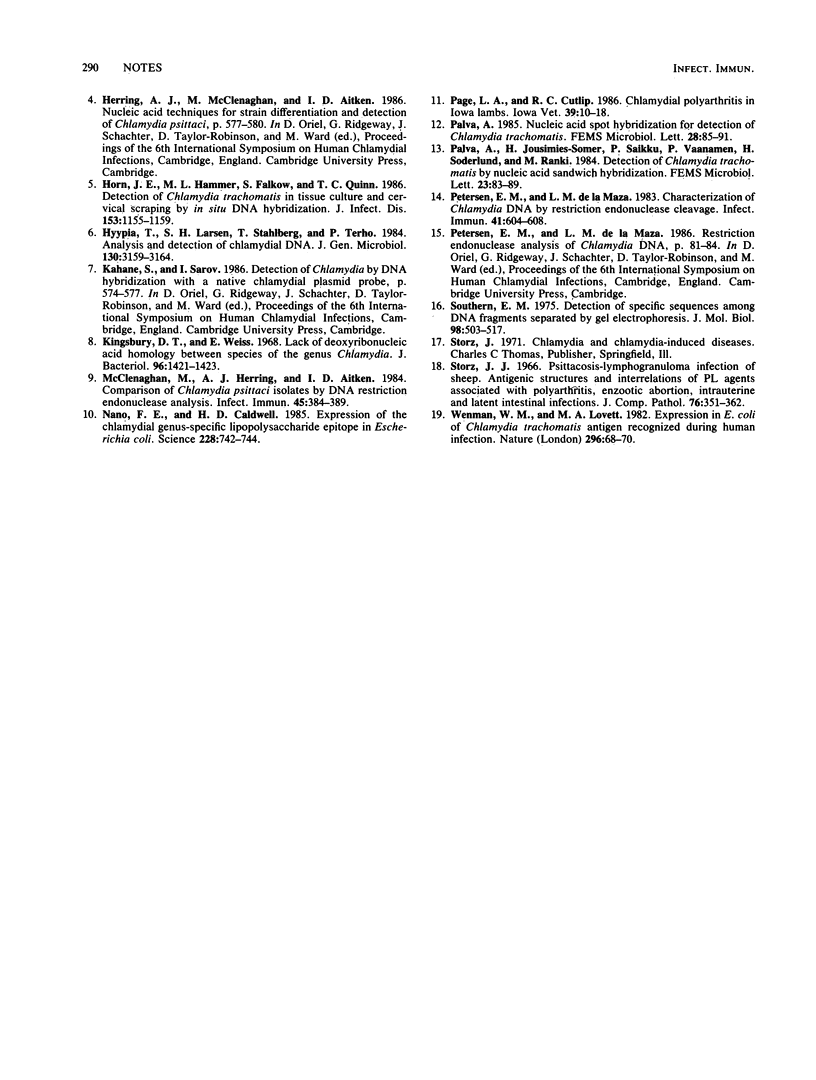
Images in this article
Selected References
These references are in PubMed. This may not be the complete list of references from this article.
- Brown A. S., Grice R. G. Isolation of Chlamydia psittaci from koalas (Phascolarctos cinereus). Aust Vet J. 1984 Dec;61(12):413–413. doi: 10.1111/j.1751-0813.1984.tb07182.x. [DOI] [PubMed] [Google Scholar]
- Caldwell H. D., Kuo C. C., Kenny G. E. Antigenic analysis of Chlamydiae by two-dimensional immunoelectrophoresis. I. Antigenic heterogeneity between C. trachomatis and C. psittaci. J Immunol. 1975 Oct;115(4):963–968. [PubMed] [Google Scholar]
- DOHERTY R. L., CARLEY J. G., LEE P. E., MEYER K. F., EDDIE B. The effect of chlortetracycline on Australian parrots naturally infected with psittacosis. Med J Aust. 1961 Jul 22;48(2):134–139. doi: 10.5694/j.1326-5377.1961.tb24354.x. [DOI] [PubMed] [Google Scholar]
- Horn J. E., Hammer M. L., Falkow S., Quinn T. C. Detection of Chlamydia trachomatis in tissue culture and cervical scrapings by in situ DNA hybridization. J Infect Dis. 1986 Jun;153(6):1155–1159. doi: 10.1093/infdis/153.6.1155. [DOI] [PubMed] [Google Scholar]
- Hyypiä T., Larsen S. H., Ståhlberg T., Terho P. Analysis and detection of chlamydial DNA. J Gen Microbiol. 1984 Dec;130(12):3159–3164. doi: 10.1099/00221287-130-12-3159. [DOI] [PubMed] [Google Scholar]
- Kingsbury D. T., Weiss E. Lack of deoxyribonucleic acid homology between species of the genus Chlamydia. J Bacteriol. 1968 Oct;96(4):1421–1423. doi: 10.1128/jb.96.4.1421-1423.1968. [DOI] [PMC free article] [PubMed] [Google Scholar]
- McClenaghan M., Herring A. J., Aitken I. D. Comparison of Chlamydia psittaci isolates by DNA restriction endonuclease analysis. Infect Immun. 1984 Aug;45(2):384–389. doi: 10.1128/iai.45.2.384-389.1984. [DOI] [PMC free article] [PubMed] [Google Scholar]
- Nano F. E., Caldwell H. D. Expression of the chlamydial genus-specific lipopolysaccharide epitope in Escherichia coli. Science. 1985 May 10;228(4700):742–744. doi: 10.1126/science.2581315. [DOI] [PubMed] [Google Scholar]
- Peterson E. M., de la Maza L. M. Characterization of Chlamydia DNA by restriction endonuclease cleavage. Infect Immun. 1983 Aug;41(2):604–608. doi: 10.1128/iai.41.2.604-608.1983. [DOI] [PMC free article] [PubMed] [Google Scholar]
- Southern E. M. Detection of specific sequences among DNA fragments separated by gel electrophoresis. J Mol Biol. 1975 Nov 5;98(3):503–517. doi: 10.1016/s0022-2836(75)80083-0. [DOI] [PubMed] [Google Scholar]
- Storz J. Psittacosis-lymphogranuloma infection of sheep. Antigenic structures and interrelations of PL agents associated with polyarthritis, enzootic abortion, intrauterine and latent intestinal infections. J Comp Pathol. 1966 Oct;76(4):351–362. doi: 10.1016/0021-9975(66)90055-7. [DOI] [PubMed] [Google Scholar]
- Wenman W. M., Lovett M. A. Expression in E. coli of Chlamydia trachomatis antigen recognized during human infection. Nature. 1982 Mar 4;296(5852):68–70. doi: 10.1038/296068a0. [DOI] [PubMed] [Google Scholar]



